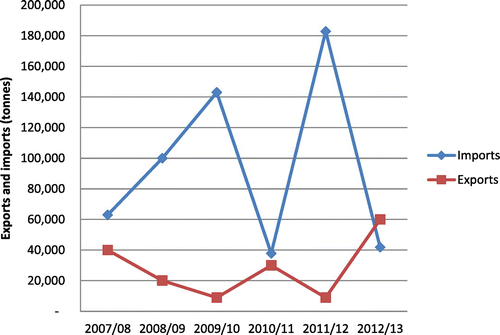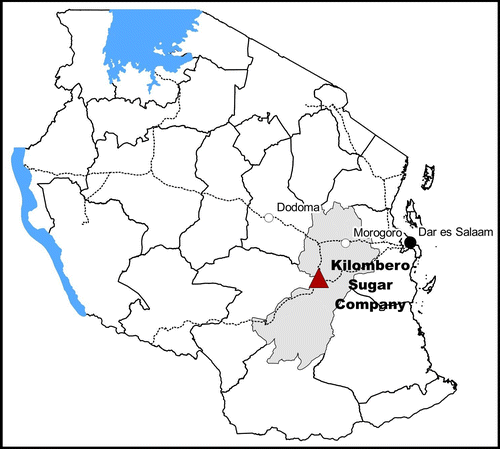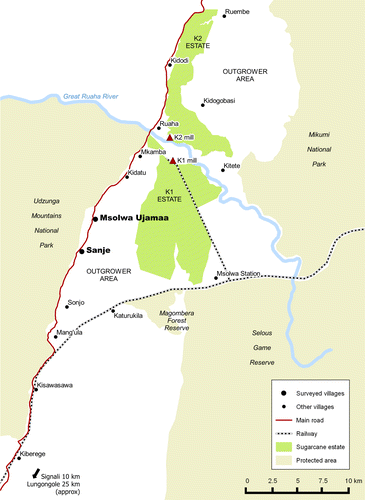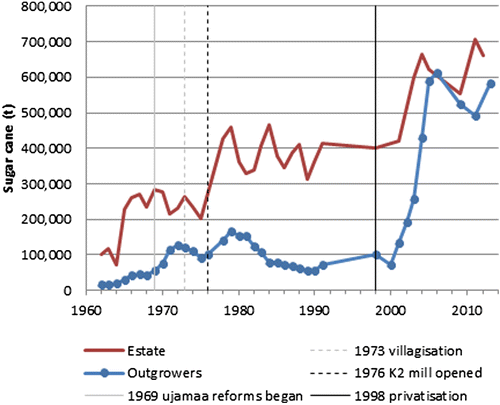Figures & data
Figure 1. State of sugar imports and exports in Tanzania. Sources: Sugar Board of Tanzania, ‘Imports and Exports’ (Dar es Salaam, SBT, 2014), available at http://sbt.go.tz/index.php/data; Comtrade, cited in FAO, Analysis of Incentives and Disincentives, 2012. Note: According to SBT, exports are for exploring and developing regional markets.

Figure 2. Map showing the location of KSCL. Source: Smalley, Sulle and Malale, ‘The Role of the State and Foreign Capital in Agricultural Commercialisation’, p. 4.

Figure 3. Map showing the outgrower area in Kilombero Valley. Source: Smalley, Sulle and Malale, ‘The Role of the State and Foreign Capital in Agricultural Commercialisation’, p. 5.

Table 1. The types of outgrowers and their numbers, the land they cultivate and sugar cane they supplied to KSCL in the 2013–2014 season
Figure 4. Total amount of sugar cane produced or harvested annually by Kilombero Sugar Company from its own estate(s) and by outgrowers. Source: adapted from Smalley, Sulle and Malale, ‘The Role of the State and Foreign Capital in Agricultural Commercialisation’, p. 12. Notes: With additional sources from Illovo, Tanzania Socio-Economic Impact Assessment; Sugar Board of Tanzania, ‘Imports and Exports’; B., Nyundo, A. Mtui and H. Kissaka, An Assessment of Ecological and Social-Economic Impacts Caused by Collection of Deadwood, Medicinal Plants and Cutting of Grass for Thatching in Udzwungwa Mountains National Park (Morogoro, Udzungwa Mountains National Park and Worldwide Fund for Nature Conservation – Tanzania Programme Office, 2006); Illovo Sugar Ltd, ‘Review of Operations’, in Annual Report 2005 (Durban, Illovo Sugar, 2005); Tomlinson, ‘Social Development through Outgrower Schemes’; M. Mbilinyi and A.M. Semakafu, ‘Gender and Employment on Sugarcane Plantations in Tanzania’, Sectoral and Working Discussion Papers, Agriculture, SAP 2.44/WP.85 (Geneva, International Labour Organization, 1995); and World Bank, Appraisal of the Kilombero Sugar Project Tanzania, Report no. 466a-TA (Washington, DC, World Bank, 1974); some of the data are unclear as to whether they show total cane produced, harvested or crushed.

